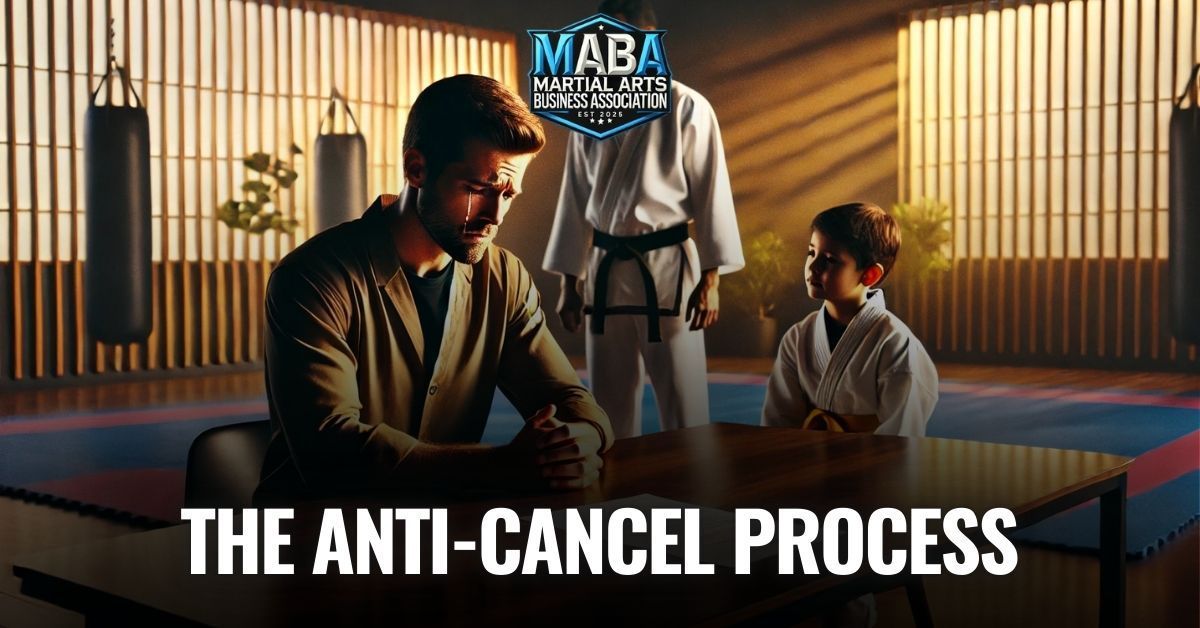The Power of Web Design for Kids Martial Arts Schools
In the digital age, a compelling online presence is no longer a luxury but a necessity for businesses, including kids martial arts schools. At the heart of this online presence lies your website - your digital storefront that can either make or break your impression on potential clients.
Web design principles are the rules of the game here. They help in creating a website that is not only visually appealing but also functional and user-friendly. These principles guide how your website communicates your school's unique message, showcases its brand identity, and engages prospective students and their parents.
For kids martial arts schools, these principles take on even greater significance. A well-designed website can attract more students, enhance your school's reputation, and ultimately, help your business grow. It can create that impactful first impression, highlight what sets your martial arts classes apart, and persuade visitors to enroll their kids in your programs.
How to Apply Web Design Principles for Your Kids Martial Arts School
In this section, I will show you how to apply web design principles for your kids martial arts school, and how they can help you improve your online presence and grow your business.
Web design principles are the rules and guidelines that help you create a website that is attractive, functional, and user-friendly. They help you communicate your message, showcase your brand, and engage your audience.
Web design principles are especially important for kids martial arts schools because they can help you attract more students, increase your reputation, and grow your business. A good website can make a great first impression, showcase your unique selling proposition, and persuade your visitors to take action.
To apply web design principles for your kids martial arts school, you need to follow these steps:
1. Choose a suitable layout for your website
A theme is the overall look and feel of your website, such as the colors, fonts, images, etc. A layout is the arrangement of the elements on your website, such as the header, footer, sidebar, etc. You should choose a theme and layout that match your brand identity, target audience, and goals.
For example:
• You can use a theme that reflects the style of martial arts you teach, such as karate, taekwondo, judo, etc.
• You can use a layout that highlights the most important information and features on your website, such as your logo, slogan, contact details, testimonials, etc.
2. Optimize your website for mobile devices
Mobile devices are the most common way that people access the internet nowadays. You should make sure that your website is responsive, which means that it adapts to different screen sizes and orientations. A responsive website can improve your user experience, search engine ranking, and conversion rate.
For example:
• You can use a tool like [Responsive Design Checker] to test how your website looks on different devices.
• You can use a tool like [Google Mobile-Friendly Test] to check if your website meets the mobile-friendly criteria.
3. Use clear and catchy headlines, subheadings, and bullet points
Headlines, subheadings, and bullet points are the elements that catch the attention of your visitors and guide them through your website. You should use them to highlight the main points and benefits of your website content. They should be clear, catchy, and concise.
For example:
• You can use headlines that state your unique selling proposition or value proposition, such as "We are the only school in town that teaches kids how to defend themselves against bullies using non-violent techniques."
• You can use subheadings that break down your content into smaller sections or topics, such as "How to enroll in our school", "What our students say about us", "Our programs and services", etc.
• You can use bullet points that list the features or benefits of your content in a concise and easy-to-read way, such as "We offer free trial classes", "We have qualified instructors", "We guarantee results or your money back", etc.
Using high-quality images and videos is crucial for enhancing the visual appeal and engagement of your website. These elements allow you to effectively highlight your school, programs, and improve your web design principles for your kids' martial arts school.
4. Use analytics tools to measure your website performance and user behavior.
Analytics tools are software or applications that help you collect and analyze data about your website performance and user behavior. They can help you identify the strengths and weaknesses of your website design, content, and functionality. They can also help you optimize your website for search engines, conversions, retention, etc. Some of the analytics tools you can use are:
• [Google Analytics]: This is a free tool that helps you track and report your website traffic, audience, behavior, conversions, etc.
• [Hotjar]: This is a tool that helps you understand how your visitors interact with your website using heatmaps, recordings, surveys, etc.
• You can use images and videos that have good resolution, contrast, and brightness
• You can use a tool like [Image Optimizer] or [Video Compressor] to reduce the file size and loading time of your images and videos
5. Use clear and simple language and tone
Language and tone are the elements that convey your message and personality to your visitors. They can help you establish trust, credibility, and rapport with your audience. You should use clear and simple language and tone that are appropriate for your target market, brand identity, and goals.
For example:
• You can use language that is easy to understand, friendly, and conversational
• You can use tone that is positive, enthusiastic, and professional
• You can avoid using jargon, slang, or technical terms that might confuse or alienate your visitors
Testing and Improving Your Web Design Principles for Your Kids Martial Arts School
An effective website for a kids martial arts school is not just about deploying the right web design principles. It also involves continuous testing and optimization to ensure your site keeps delivering value to your audience and meets your business objectives.
Here's how you can test and improve your web design principles:
1. Use Analytics Tools to Measure Website Performance
Analytics tools are invaluable in understanding how your website is performing. They can help identify strengths, weaknesses, and opportunities for improvement in your website design.
- Google Analytics: This popular, free tool tracks and reports your website traffic, user behavior, and conversions, providing insights into how visitors interact with your site.
- Hotjar: This tool provides visual representations of user interactions on your website through heatmaps and recordings, helping you understand user behavior better.
2. Leverage Feedback Tools for User Opinions
Feedback tools collect and analyze user opinions about your website, offering insights into what visitors like or dislike and what improvements they desire.
- SurveyMonkey: This online survey tool helps you gather feedback directly from your visitors or customers.
- UserTesting: This platform allows you to get real-time feedback on your website by watching videos of people using it.
3. Implement A/B Testing Tools for Optimization
A/B testing tools allow you to compare different versions of your website to find out which one performs better, aiding in optimizing user experience and conversion rates.
- Optimizely: This tool allows you to create and run A/B tests on your website without coding, making it easier to optimize your site based on data-driven decisions.
- VWO (Visual Website Optimizer): This tool offers a visual editor to create and run A/B tests on your website, allowing you to visually compare different versions of your site.
By leveraging these tools and strategies, you can continuously test and improve your web design principles, ensuring that your kids martial arts school's website remains effective and engaging. Remember, an impactful online presence is a journey, not a destination. Keep testing, learning, and optimizing for success.
Putting it Altogether: Harnessing Web Design Principles for Your Kids Martial Arts School
Web design principles are the guiding lights to creating a website that is not just visually appealing but also functional and user-friendly. They help your kids martial arts school communicate its unique message, showcase its brand, and engage potential students and their parents. From choosing the right theme and layout, optimizing for mobile devices, using clear and catchy headlines, to employing high-quality visuals and simple language, these principles can significantly enhance your online presence.
Moreover, continuous testing and improvement using tools like Google Analytics, SurveyMonkey, and Optimizely can help optimize your site based on user behavior and feedback. The result? A website that attracts more students, boosts your reputation, and grows your business.
So, are you ready to leverage the power of web design principles for your kids martial arts school? Feel free to contact me if you have any questiuons. Thank you for reading, and don't forget to share this post with others who might find it helpful!
Common Frequently Asked Questions You May Have
1. What are the essential features of a martial arts school website?
The essential features of a martial arts school website include detailed information about classes, instructor profiles, success stories, class schedules, and easy-to-find contact information. It's also beneficial to include testimonials, a gallery showcasing the school and students, and an easy way for parents to sign up or get more information.
2. How can I make my martial arts school website more appealing to parents?
To appeal to parents, ensure your website is easy to navigate, mobile-friendly, and provides all necessary information about your programs in a straightforward, engaging manner. Highlight the benefits of martial arts for children, such as improved discipline, self-confidence, and physical fitness. Include testimonials from other parents and clear calls to action. Remember, parents are looking for assurance that their child will be in a safe, nurturing environment, so make that a focal point of your messaging.
3. How can I optimize my martial arts school website for search engines?
To optimize your martial arts school website for search engines, focus on SEO best practices like keyword optimization, quality content creation, and link building. Ensure your website is mobile-friendly as Google prioritizes mobile-optimized sites. Also, include local SEO strategies like adding your school's address and creating a Google My Business listing to improve local search visibility.
4. What should I include in my martial arts school's website content?
Your website content should cover all aspects of your martial arts school. This includes detailed descriptions of your classes, profiles of instructors, success stories from students, class schedules, and contact information. It's also beneficial to have a blog where you share tips, advice, and updates related to martial arts training. Remember to highlight the benefits of martial arts training for children and your school's unique selling points.
5. How often should I update my martial arts school website?
Regular updates are essential to keep your website fresh and relevant. Aim to update your site at least once a month with new content, such as blog posts, news, or updates about your school. Regular updates not only keep your audience engaged but also signal to search engines that your site is active, which can boost your SEO efforts.




